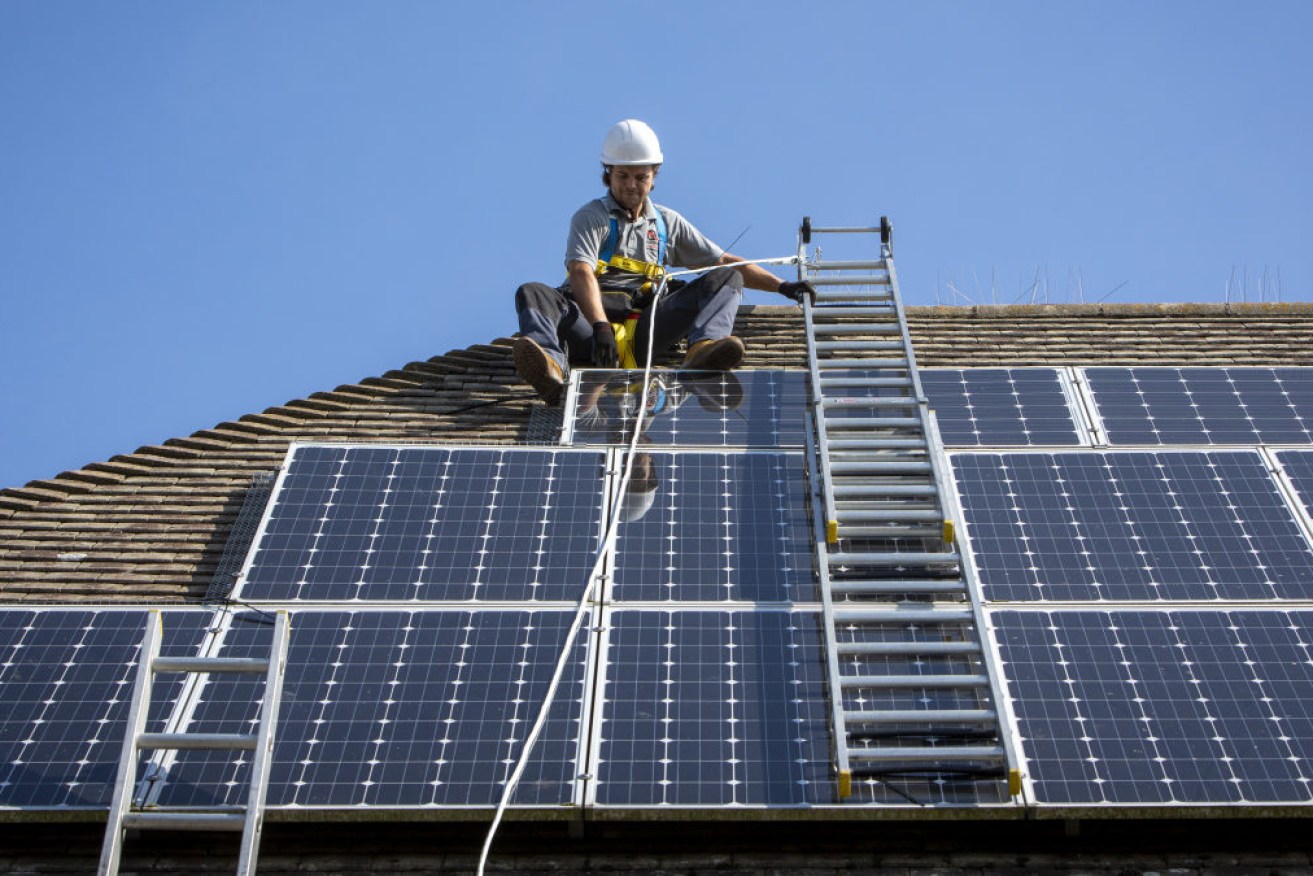SA leads on climate change action as states and territories pick up federal government’s slack


South Australia is leading the way on transitioning to renewable energy. Photo: Getty
In lieu of a national policy to help Australia transition from fossil fuels the states and territories have picked up the slack – and one state has done a lot better than others, according to a new report.
South Australia offers vital lessons for other jurisdictions on transitioning from a fossil fuel-based electricity grid to a low emissions, high renewables grid, a report released by the Institute for Energy Economics and Financial Analysis (IEEFA) this week found.
“The proportion of South Australia’s electricity demand met by large scale and small scale variable renewable energy generation grew from 0 per cent to 60 per cent in just 14 years,” the report’s author Johanna Bowyer said.
“Coal was phased out in 2016. Today the grid is dominated by wind and solar backed up by battery storage and interstate grid connectivity, with peaking gas being used as a temporary generation technology until South Australia moves to net 100 per cent renewables.”
The IEEFA report follows last month’s announcement by the world’s largest advanced economies, the powerful G7 group of nations, that they they would stop international financing of coal projects in a bid to tackle climate change and limit the rise in global temperatures to 1.5 degrees Celsius above pre-industrial levels.
The move further isolated Australia on the global stage when it comes to the Morrison government’s stance on climate change and funding and investing in coal.
SA shows the potential of renewable energy
South Australia has the largest proportion of demand provided by rooftop solar of all states in Australia’s National Electricity Market, and a staggering 40 per cent of homes have rooftop solar installed.
“But the records don’t stop there,” IEEFA report co-author Gabrielle Kuiper said.
“South Australia has shown that 100 per cent solar generation is possible during the daytime to meet users’ energy demands,” Dr Kuiper said.
There is now broad agreement across state and territory governments that Australia needs to take action to combat the threat of climate change.
All state and territory jurisdictions have adopted a target of net zero emissions by 2050 but SA has led the pack and is expected to achieve its net 100 per cent renewable energy target by 2025, five years ahead of schedule.
“SA is not just a good example for Australia, it’s a good example worldwide in terms of having a large jurisdiction move to renewables,” Australia Institute climate change and energy director Richie Merzian said.
As other countries grapple with making the transition, South Australia shows the world how it can be done, he said.
“The timing is great – the US is looking at how it can get to 100 per cent renewables in 14 years. These lessons will be drawn on, and we have them right here in our backyard,” Mr Merzian said.
But the states and territories will need more support from the federal government, he said.
“The Australian government knows its main trading partners are going to net zero,” Mr Merzian said.
“But in the meantime, they’re trying to promote and expand and sell as much fossil fuels as they can.”








